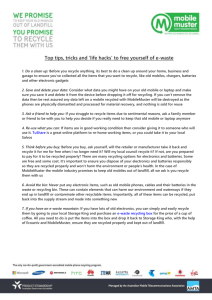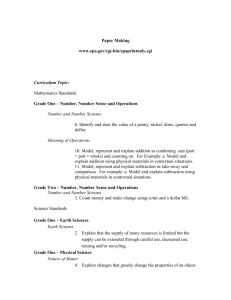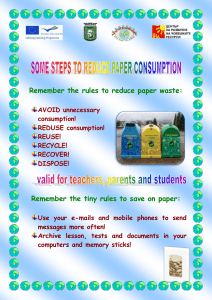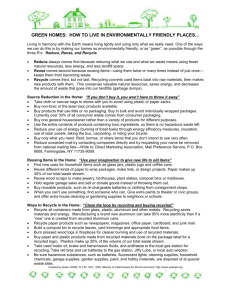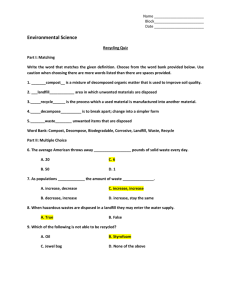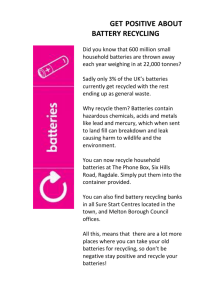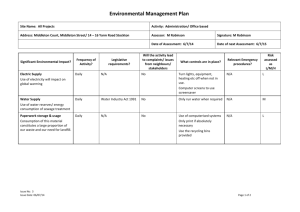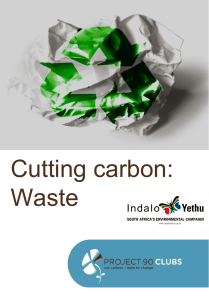Jenni Bransgrove
advertisement
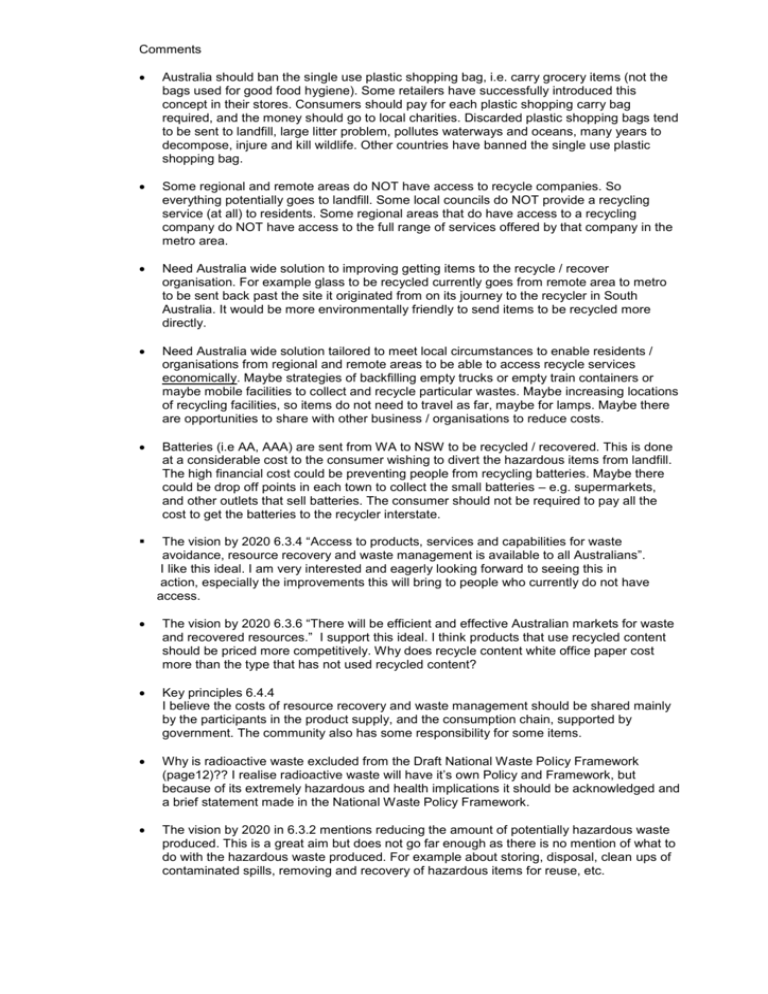
Comments Australia should ban the single use plastic shopping bag, i.e. carry grocery items (not the bags used for good food hygiene). Some retailers have successfully introduced this concept in their stores. Consumers should pay for each plastic shopping carry bag required, and the money should go to local charities. Discarded plastic shopping bags tend to be sent to landfill, large litter problem, pollutes waterways and oceans, many years to decompose, injure and kill wildlife. Other countries have banned the single use plastic shopping bag. Some regional and remote areas do NOT have access to recycle companies. So everything potentially goes to landfill. Some local councils do NOT provide a recycling service (at all) to residents. Some regional areas that do have access to a recycling company do NOT have access to the full range of services offered by that company in the metro area. Need Australia wide solution to improving getting items to the recycle / recover organisation. For example glass to be recycled currently goes from remote area to metro to be sent back past the site it originated from on its journey to the recycler in South Australia. It would be more environmentally friendly to send items to be recycled more directly. Need Australia wide solution tailored to meet local circumstances to enable residents / organisations from regional and remote areas to be able to access recycle services economically. Maybe strategies of backfilling empty trucks or empty train containers or maybe mobile facilities to collect and recycle particular wastes. Maybe increasing locations of recycling facilities, so items do not need to travel as far, maybe for lamps. Maybe there are opportunities to share with other business / organisations to reduce costs. Batteries (i.e AA, AAA) are sent from WA to NSW to be recycled / recovered. This is done at a considerable cost to the consumer wishing to divert the hazardous items from landfill. The high financial cost could be preventing people from recycling batteries. Maybe there could be drop off points in each town to collect the small batteries – e.g. supermarkets, and other outlets that sell batteries. The consumer should not be required to pay all the cost to get the batteries to the recycler interstate. The vision by 2020 6.3.4 “Access to products, services and capabilities for waste avoidance, resource recovery and waste management is available to all Australians”. I like this ideal. I am very interested and eagerly looking forward to seeing this in action, especially the improvements this will bring to people who currently do not have access. The vision by 2020 6.3.6 “There will be efficient and effective Australian markets for waste and recovered resources.” I support this ideal. I think products that use recycled content should be priced more competitively. Why does recycle content white office paper cost more than the type that has not used recycled content? Key principles 6.4.4 I believe the costs of resource recovery and waste management should be shared mainly by the participants in the product supply, and the consumption chain, supported by government. The community also has some responsibility for some items. Why is radioactive waste excluded from the Draft National Waste Policy Framework (page12)?? I realise radioactive waste will have it’s own Policy and Framework, but because of its extremely hazardous and health implications it should be acknowledged and a brief statement made in the National Waste Policy Framework. The vision by 2020 in 6.3.2 mentions reducing the amount of potentially hazardous waste produced. This is a great aim but does not go far enough as there is no mention of what to do with the hazardous waste produced. For example about storing, disposal, clean ups of contaminated spills, removing and recovery of hazardous items for reuse, etc. Penalties should be increased for damaging the environment and health. 2.
